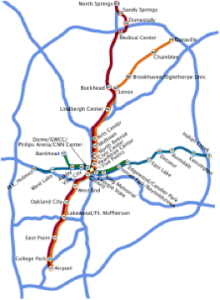BackgroundFor Winston-Salem residents without the means or ability to drive, the bus system plays a critical role in determining their ability to reach jobs, education, medical care, child care, public benefits, and community activities. The Business 40 infrastructure improvement project presents an opportunity to consider the mobility of all Winston-Salem residents and to focus on how the bus system can be used to advance health equity in our community.
The NC DOT has designated funds to expand bus service during the Business 40 closure.
0 Comments
by Ashlyn McCurly
Angry shouts from behind—“stop, don’t move, put your hands on your head”—cop badges, flashing lights, interrogation. Police officers pat you down for concealed weapons and go through your belongings. Regardless of your race, gender, or age, this is an invasion of privacy. Former Mayor Michael Bloomberg and The New York City Police Department created the Stop-and-Frisk Program with the goal of stopping crimes before they occurred. Officers maintained an active presence on the streets to prevent minor crimes from escalating into ones that are larger and more violent. If crime was stopped before it intensified, would murders, robberies, and assaults disappear altogether? Can New Yorkers now walk the streets of the city and feel safe because of a proactive police presence? Maybe some New Yorkers feel safer due to this policy. But for Latinos and African-Americans, the racial profiling inherit in the Stop-and-Frisk procedures is unfair and discriminatory. From 2002 to 2011, African-Americans and Latinos made close to 90% of the people stopped. About 88% of these stops were of innocent residents. The program has not significantly decreased the number of shootings. In 2002, there were 1,892 victims of shooting, and 97,296 stops. Nine years later, in 2011, there were 1,821 victims and 685,724 stops. Only 0.2% of the stops found guns on individuals, so the increased frequency of stops has done little to preempt shootings in New York City. The purpose of the program is to get dangerous people off the streets before a crime is committed; however, between 2009 and 2012, 6% of the 2.4 million stops led to arrests, with only a 3% conviction rate. Cumulative data indicates that this intrusive and humiliating practice is ineffective, resulting more in discrimination against minorities than in a reduction in crime. Efficacy aside, Stop-and-Frisk clearly violates the 4th Amendment’s protection against unreasonable searches and seizures. The court ruling deeming the program unconstitutional is the correct democratic response to the actions of the New York City police. Officers stop innocent people without an objective suspicion of participation in wrongful actions. Observing the way someone walks, fidgets, changes direction, or even if he has a bulging pocket should not be suspicious enough activity to warrant an intrusive search.  Current MARTA transportation routes. Current MARTA transportation routes. by Sarah Collier Atlanta’s primary public transportation system, the Metropolitan Atlanta Rapid Transit Authority (MARTA), has recently released plans to expand their railway transit lines to the North Fulton in the Georgia 400 corridor, an area with a growing job market. While this expansion provides those north of Atlanta easier access to a Jamba Juice, it also represents a significant first step towards decreasing the racial inequality perpetuated by MARTA’s current railway transit routes. Having worked for two summers in Atlanta, my most prominent memory was the long commute between the white suburbs north of Atlanta, where jobs are plentiful, to its impoverished black neighborhoods downtown. I would have used public transportation, however the MARTA suspiciously ends right before white suburbia begins. MARTA’s transit route design is sorely lacking. With its simple cross-shaped track, it has a local reputation as only being useful for getting to either a Brave’s baseball game or the airport. My long drives to work gave me ample time to wonder if it was simply unskilled urban planning or some other factor that had caused MARTA’s limited route design. As it turns out, MARTA’s history reveals racial discrimination as a key player in this debacle. by Tony Lucadomo
America’s transportation infrastructure is in a state of disrepair, and existing policy is unable to meet the nation’s current and future needs. The shortcomings of our transportation infrastructure are well known. The state of the nation’s roads, bridges, ports, and railways is unacceptable. Social and economic costs abound. Only with strong presidential leadership can we tackle this issue and move forward. Earlier this year, the Miller Center at the University of Virginia organized the David R. Goode Conference on Transportation Policy to tackle the problem. The event brought together leaders from across the policy community to devise a strategic framework that fosters progress. The result is a series of recommendations aimed at getting us back on track. First, transportation funding should be immune to economic cycles. Infrastructure spending is often seen as superfluous in a time of fiscal constraint, but that narrative is disingenuous. Without continuous investment, our economy suffers and likelihood of ever getting away from times of fiscal constraint diminishes. Thus, it is precisely in these times of downturn that such outlays must be made. Second, a public relations effort is warranted. President George H.W. Bush famously said that he had three main domestic priorities: “jobs, jobs, jobs.” The message resonated, support expanded, and as part of a broader initiative the Intermodal Surface Transportation Efficiency Act (ISTEA) soon followed. With the right public relations, the White House enacted transformative reform. A similar re-branding is called for today. |
Categories
All
Archives
April 2022
|
ADDRESSVirginia Policy Review
235 McCormick Rd. Charlottesville, VA 22904 |
|
|